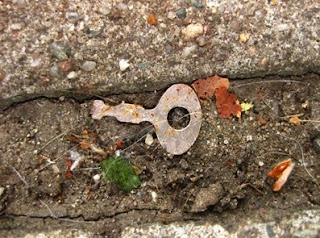
http://www.flickr.com/photos/79557817@N00/24106648/
...If we start thinking "When is future..", we probably are already in it somehow.
Recently I was surprised, excited and... , by the work at a 9 year old institution run at USC, fundet by the Army and placed right next to Hollywood, it is called "Institute for Creative Technologies". I don't exactly know, what my feelings about that future is (excitement + ...), mainly probably, because it is not really possible to foresee or even imagine it. I guess that is why also concern arises. Mainly I was curious about:
If that technology is combined with the future of any kind of on-line analysis of an expression (face, eyes, body, voice, words...)
- (Check out the Software "Observer" and their extension of automated emotion recognition that simply needs a video of a person. Or consider, that you can already do voice analysis of two persons having a conversation and tell online, using frequency-analysis, how much sympathy they have for each other (the voices (and also the bodylanguage) kind of converge)...)
- And that combined with some sophisticated statistical analysis:(Is there already something likeAn individual frequency analysis of e.g., of emotional facial expression / voice / skin conductance / ... Combined with something like network-modelling kinda based on the individual traits and states of that person...???)
That idea feels like web.10
But it started already e.g., near Hollywood, Science and the Army (bless, of a more or less democratic nation). Today I thought, I want to write bits of delight. Maybe tomorrow. But you may imagine a really great hour (or three) with some friends. You all live here and there. But every now and then you meet in a really really photorealistic 3d virtual reality.
And enjoy a glass of wine...
One of the projects of that institute - and, I think, that is just one field, where future technology will be present, like the internet is today, - ,is clinical psychological treatment:
From their website:
"The Laboratory for Virtual Reality, Psychology, Rehabilitation, and Social Neuroscience at the University of Southern California's Institute for Creative Technologies is engaged in a broad program of research on the brain mechanisms that underlie neurocognitive functioning and emotion regulation in persons throughout the life course.
We make use of Virtual and Augmented Reality to study associations between the essential neural correlates of cognitive functioning and emotion regulation to assess the mechanisms of brain-behavior relations. Included among the disorders we have recently studied are mood and anxiety disorders, stroke, mild traumatic brain injury, ADHD, autism, Alzheimer's, and pain distraction.
We believe that the use of Virtual and Augmented Reality are essential components in the evolution of medical and psychological sciences in the digital age. As with any technology applied in these areas, both challenges and opportunities will emerge in how Virtual and Augmented Reality are usefully applied and validated. The development of archetypical virtual environments (i.e., offices, homes, social environments, etc.) will likely continue as Virtual and Augmented Reality are applied to a wider range of clinical and scientific research questions in the future."
Also check out a more technical talk of their graphics department. Enjoy!










